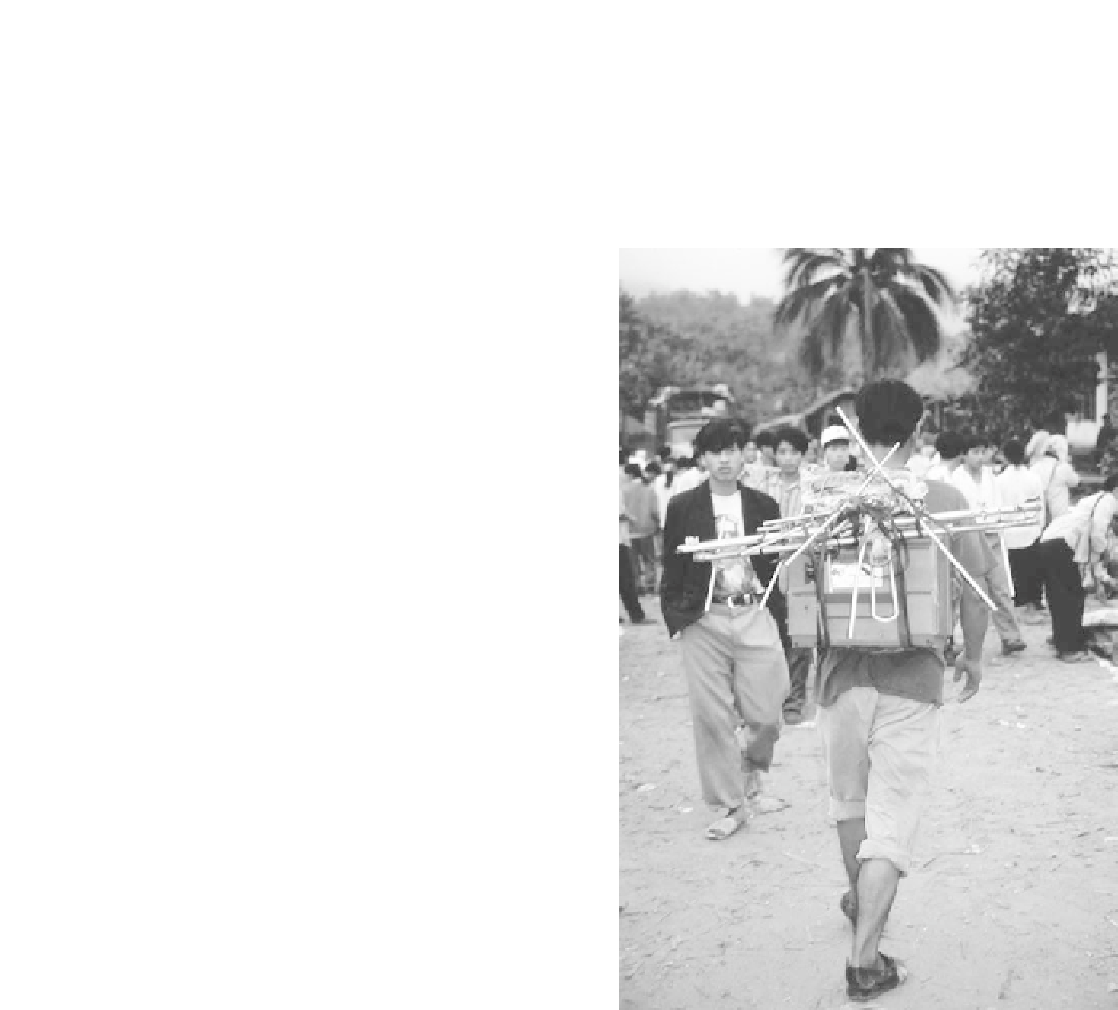Geography Reference
In-Depth Information
the discourse and strategy of development
produced its opposite: massive underdevelopment
and impoverishment, untold exploitation and
oppression.
And Sachs (1992):
The idea of development stands like a ruin in the
intellectual landscape. Delusion and disappoint-
ment, failures and crimes have been the steady com-
panions of development and they tell a common
story: it did not work.
Critics of post-development theory note that it ignores
the very real improvements that have been realized in the
lives of millions. On the other hand, deprivation is not an
invention of the mind; it is an actuality and it is corrosive.
A major portion of Asia' s poor can be found:
Living in remote forest areas (the upland poor,
often indigenous people)
Among the fishing communities (the coastal poor)
On marginal land areas (the dry-land poor)
Among those affected by regular floods (the
wetland poor)
as to what the “in” thing is to have as one' is first “expen-
sive” purchase. About 30 years ago, the rage was for a
pair of sunglasses, next it was a wristwatch, then a tran-
sistor radio to be followed by a television, perhaps a mo-
tor scooter, and ultimately a cell phone, I-Pod, and so on
(Figure 4-2). As people are increasingly exposed to Western
In congested cities and towns with bad shelter con-
ditions (the slum poor)
Whatever the situation, we cannot color the entire
globe monochrome and explain it under a single rubric.
Diversity of experience and the fact that there might be
“good development” and “bad development” cannot be
ignored. While post-development ideas might bring
about deeper reflections about development and its rami-
fications, according to the critics, it is historically flawed.
•
The Meaning of “Poverty”
What does it really mean to be poor? Is being poor related
to money? T To food? T To shelter? T To material possessions?
Who decides what poverty is? Poverty is usually defined
by “experts” from the WB, UN, and other such organiza-
tions. The ability to buy a “bundle of goods,” including
commodities such as electricity , clothing, and bus fare, is
being increasingly employed to measure poverty . As ma-
terial development ensues in an area, inhabitants become
drawn into the larger socioeconomic system with its
Western concepts of consumption. However, why should
poor people not be allowed to consume? Why is it accept-
able for “us” to indulge in conspicuous consumption and
not “them?”
In my travels over the years in developing countries
from Afghanistan to Zimbabwe, I have observed changes
Figure 4-2
This TV was purchased at an open-air market in the northern hills
of Vietnam. The man is toting it back to his village. Much of this
tribal region has electricity , but the TV could also be powered by a
car battery . The most popular items in the market were packaged
food products and raw meat, tobacco and cigarettes, and individual
packets of laundry soap and birth-control pills. Battery-run clocks
were the most popular luxury items. The clocks were large and
either square or rectangular . Most had pictures of natural phenom-
ena such as snow-covered mountains, verdant forests, and stunning
waterfalls overarched with rainbows.
Photograph courtesy of
B. A. Weightman.

















Search WWH ::

Custom Search